Upon watching ‘Yashahime’s promotional video’ for the first time, Moroha’s sword caught my attention! I have questions that need answers like all of you like “Whose fang is it made of?” “Who forged the sword?” “Did Moroha inherit it from her father or grandfather?”
In any case, the sword is a weapon that is eye-catching even to new fans of the InuYasha series! So, let’s dive in and analyze the origins of the Kurikaramaru!
DISCLAIMER: There are spoilers going forward from here. So, for those of you who have not seen the InuYasha anime, nor read the manga, read carefully!
1. What is Kurikaramaru?
The Kurikaramaru is a yōkai katana with a Kurikara (倶利伽羅) dragon engraving below a golden pommel and a red grip. The sword’s simple kanji name (倶利伽羅丸) straightforwardly translates to “Profitable Fairy Tale Tool”.
It’s a meaning that perfectly suits its wielder, Moroha, because she is a bounty hunter selling demons’ body parts!
2. Whose Fang Is It Made Of?
As of Episode 2 of the Yashahime series, no one knows whose fang the Kurikaramaru blade belongs to. The fang could belong to InuYasha, but evidence points otherwise.
InuYasha never turned into an enormous dog like his father (Inu no Taisho) in the original series. He’s not capable to provide his own dog demon fang to his daughter to begin with.
He is not like Inu no Taisho who used his own dog demon fang so the Tessaiga and Tenseiga swords can be forged. Therefore, that rules out InuYasha to be the provider of the fang used in the Kurikaramaru blade.
There’s a strong possibility that Moroha’s Kurikaramaru came from Inu no Taisho’s fang. Even if he was not mentioned in any promotional medium in Yashahime, ‘Rumiko Takahashi created an original design for his character’.
That means, we’re bound to see Inu no Taisho (Moroha’s grandfather) in the Yashahime series several episodes down the line. There might even be a big family reunion of InuYasha’s family by the end of the Yashahime series.
If Inu no Taisho’s role is big in the sequel spin-off, it makes sense why the trailer videos and teaser posters would hide and not give a name drop on Inu no Taisho.
The Sunrise staff wants to keep his role a secret from Yashahime fans. If they reveal too much, viewers wouldn’t be enticed to watch Yashahime week by week.
Also, the absence of Inu no Taisho’s flashback stories in both the InuYasha manga and in the anime tells audience that the author wishes he remain a background character in the original series.
In fact, the only important role given to him is being “InuYasha and Sesshōmaru’s father” in manga cannon.
But in InuYasha Movie 3: Swords of an Honourable Ruler, the Sunrise animation staff named Inu no Taisho as “Tōga”. Since Takahashi-sense herself will heavily supervise Yashahime, who knows if this will carry forward to the sequel spin-off.
3. Who Forged the Sword?
The next question fans have in mind is the forger of the Kurikaramaru sword. There are two swordsmiths whom I know in the InuYasha series: Tōtōsai and Kaijinbō.
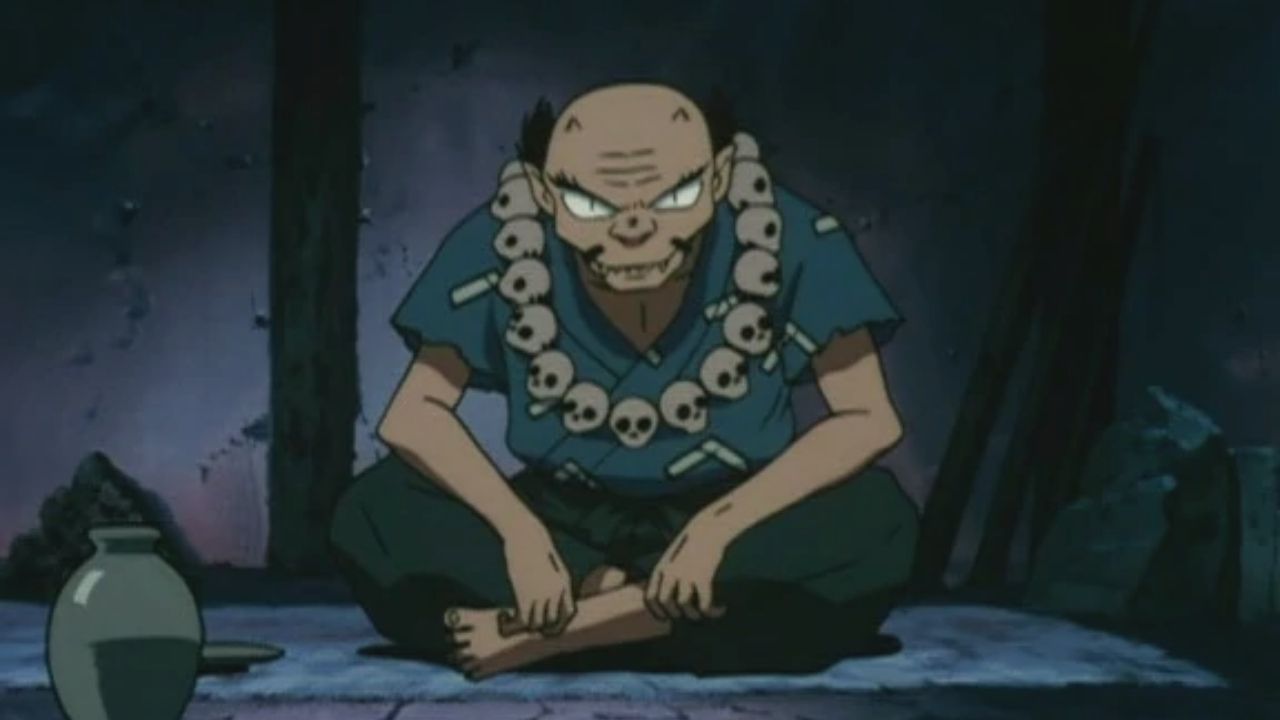
Kaijinbō is the unlikely candidate because he died during the original series. Before the start of the InuYasha series, Tōtōsai took him under his wing.
But because of the malicious powers Kaijinbō incorporate on the swords he forged, Tōtōsai expelled him.
The last we’ve seen of him is forging Tōkijin, an evil sword he crafted from a fang of Goshinki (a two-horned ogre yōkai that Naraku created; the third demonic incarnation of Naraku).
Unless Kaijinbō resurrected and became a supporting character siding on InuYasha’s side, it’s impossible that he is the forger of the Kurikaramaru blade.
If it’s not Kaijinbō, then, Kurikaramaru could have been forged by Tōtōsai. After all, he forged Inu no Taisho’s Tessaiga and Tenseiga swords.
Him forging the Kurikaramaru for Moroha is not an impossible theory. He is a humanoid yōkai swordsmith after all who reached the prime age of 267 – 271 years old in the series.
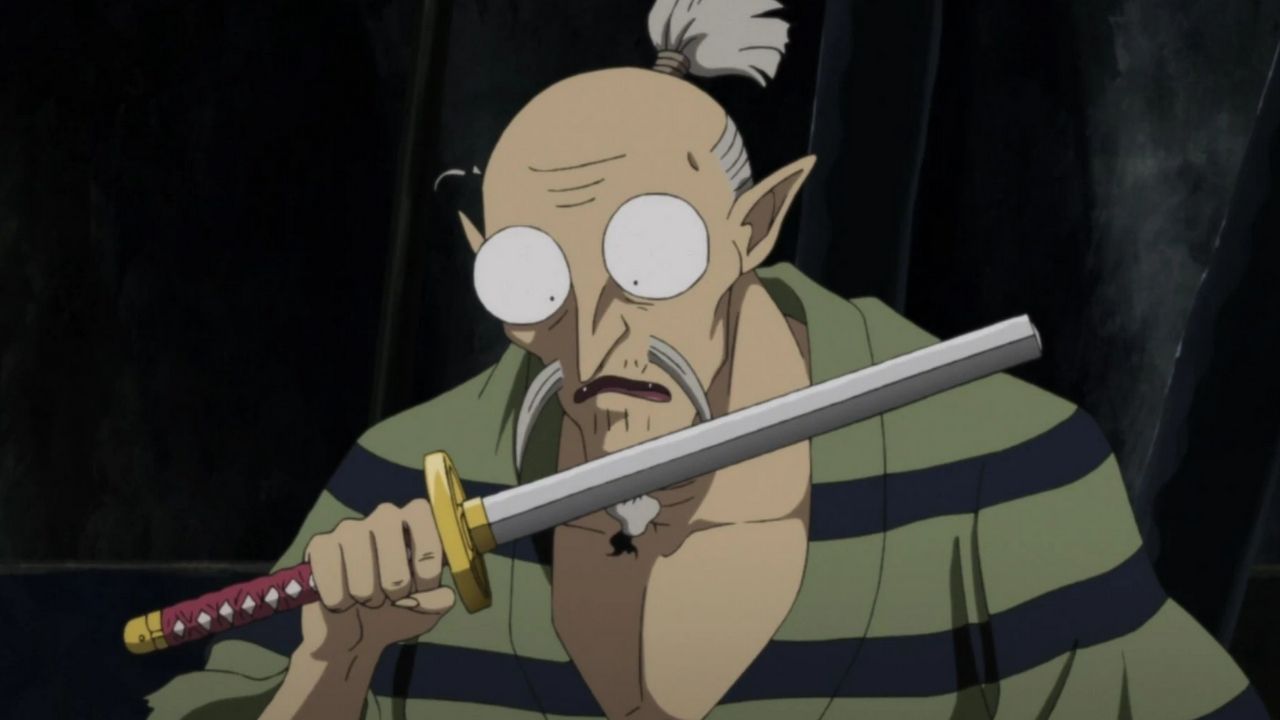
There’s a possibility that Tōtōsai forged the Kurikaramaru blade from Inu no Taisho’s fang even before the start of the Yashahime series.
InuYasha could have visited Tōtōsai inside his volcanic home and requested him to forge the Kurikaramaru sword for Moroha.
4. Who Bequeathed It To Moroha?
This is another theory lingering the Yashahime series. Bequeathing gifts or family heirlooms are not unusual practices in the Sengoku Jidai period.
So, it’s possible Moroha inherited Kurikaramaru from her shisho (“master” in English), from InuYasha, or from Inu no Taisho.
I wouldn’t be surprise if before the Yashahime series, InuYasha himself gave Kurikaramaru to her, and trained his daughter Swords 101.
But if it’s not InuYasha, then, someone else taught Moroha how to handle a sword and survive the wilderness.
Perhaps it is another supporting character in the Yashahime series that fans haven’t heard of yet.
Whoever that person is, they couldn’t be a demon slayer from Sango’s village (the only other characters in the series who knows how to wield weapons). Otherwise, they’d be slaying Moroha, a quarter-demon.
5. Was Kurikaramaru Made from Tessaiga?
This is another theory lingering around fans’ minds. InuYasha hasn’t made an appearance since after Episode 1 of Yashahime. So, what happens to Tessaiga?
Well, the only other possibility is that it transforms into the Kurikaramaru blade. After all, the Tessaiga sword did show its flame-based powers briefly when it absorbed Kinka.
But without any other information, it’s impossible to verify that this happened before Yashahime started.
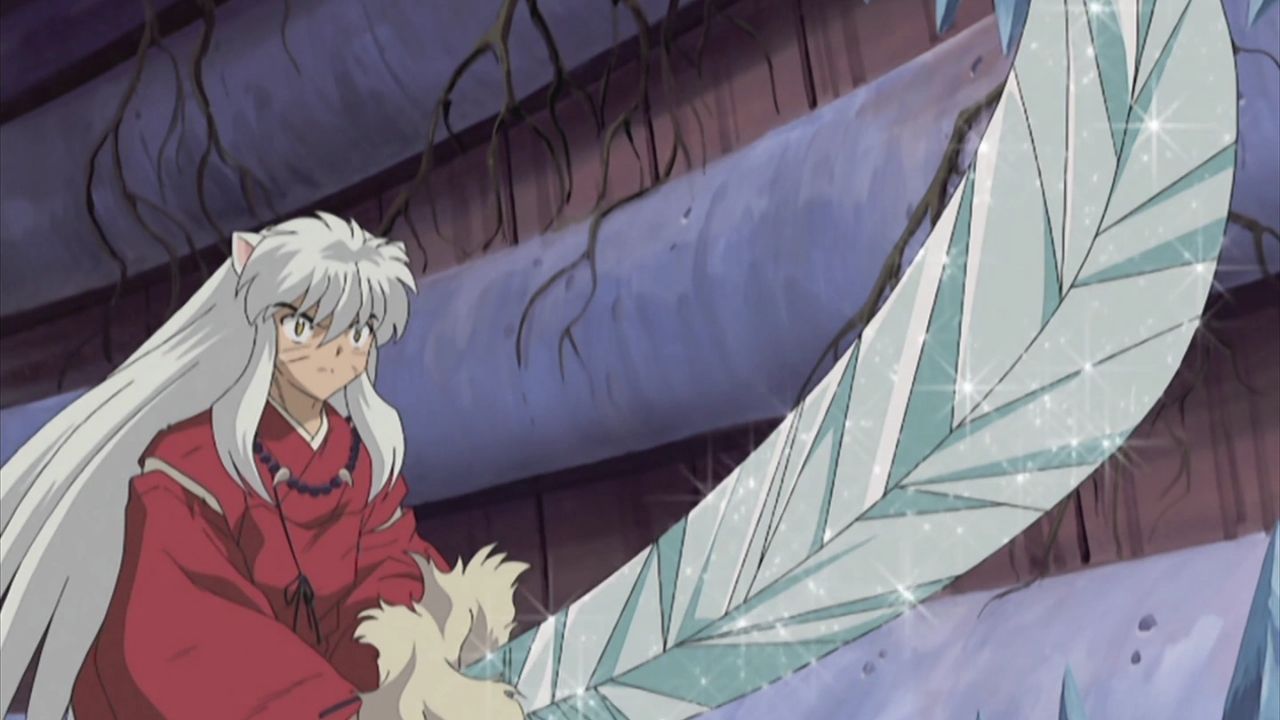
This theory could also be debunked because Kurikaramaru has only a few similarities with the powerful Tessaiga. That’s why fans have to wait for more episodes before gathering more information about Kurikaramaru’s origins.
6. “Kurikara” + the Suffix “-Maru”
Kurikaramaru’s name is unique because it’s composed of two components that come from India and Japan. So, I did a little digging and got blown away by the name origins of the sword as well Moroha’s connections to it!
I. Kurikara
- “Kurikara” (倶利加羅 ) – The famous “Kurikara” Hindu blade name comes from India’s mythical “Kurika” sword; it’s the dragon-coiled emblem that is engraved on Moroha’s infamous weapon. “Kurikara” consists of:
- a prefix “Kur-” originating from the word “Kura”, which refers to a chief clan, or a “well-born” tribe;
- a suffix “-ika” meaning to be a “child of”, to “belong to”, or “relate to”.
This follows that individuals or creatures of “Kurikara” are children or descendants of great, wealthy, and famous families because they originally belong to or are in relation to such lineage.
Moroha comes from a great family of Inu Yōkais. Her father’s name, InuYasha, means “Dog Demon”; while his grandfather’s name, ‘Tōga’ , means “Fighting Fang”.
He is also well-known as the mighty “Inu no Taishō” or the “Great Dog General”.
Moreover, Moroha’s grandmother, Izayoi, is the daughter of a wealthy lord. She may even be a princess who’s capable of brewing medicinal herbs for healing!
Izayoi may be human, but she is an aristocrat woman whom the high-ranking Inu no Taishō fell in love with upon visiting her in the mansion.
If you think about it, this makes InuYasha a prince because his parents are nobles in their own rights.
Although this is neither obvious nor mentioned the original series, Episode 2 of Yashahime at least introduced the female trio as “The Three Princesses”!
Towa, Setsuna, and Moroha are princesses, and this is obvious from the get-go.
Hanyô no Yashahime: Sengoku Otogizoushi is an anime about female warrior martial artists or ‘Onna-Bugeisha using katanas and naginatas’. It’s a perfect anime for our modern era that empowers girls as superhero characters!
Fun Facts about “Kurikara”
If you want to know more about “Kurikara”, here are some fun facts about this interesting Indian sword:
- The “-ra” syllable originates from the first syllable of the word “Raja”, which means “King”. When referring to objects such as swords, “Kurikara” means that the sword belongs to royals or nobles.
- “Kurikara” is an abbreviation for “King Kulika” because the “-ra” suffix already implies the “King”. “Kulika” is also a mistranslation; it’s correctly spelled as “King Kalki”, the same way it’s written in ancient Sanskrit texts.
- “Kalki” kings mean “Holder of the Castes” because King Kulika sits in a “Lion Throne” and rules Kalapa, the capital city of the ‘Shambhala Kingdom’.
- The Kalki kings of Shambhala are also holders of the “Kalachakra” or the “Wheel of Time”.
- The ‘Shambhala Kingdom’ is based on the “Shakyaminu Buddhist” teachings of India. It wants its believers to attain happiness, aim for peace, and reach tranquility.
- A central religious figure in Hinduism also goes by the name of Nāgarāja (or Dragon King Kurika). He is the “King of the Nāga”.
II. The Suffix “-Maru”
The Suffix “-Maru” – This Japanese suffix is given to ships by many Japanese sailors because they love their big boats.
In fact, the Heian era’s (794–1185 B.C.) ‘Bandou-maru (坂東丸) ship’ became the first ship where such instance is documented! It occurred in the Niwaji (仁和寺) temple during the year 1187 B.C.
So, when adding the “-maru” suffix, it means that the beings or objects being referred to are beloved.
Butwhat surprises me the most in the usage of this suffix is that Rumiko Takahashi allowed it to be added to a yōkai katana’s name, not just a yōkai!
It’s the only sword in the InuYasha franchise to have the suffix “-maru” in it (not sure about games, though).
Giving the “-maru” suffix to a demon sword instead of a demon is something I would never expect from the Queen of Manga’s supervision to Yashahime!
If you’re a long-time viewer of the original series, you should know that the suffix “-maru” (丸) means “circle”, “round”, “perfection”, or “completeness”. But you might wonder how these words fit themselves in the “Kurikaramaru” name.
The Suffix “-Maru” in the manga, anime, and movies
For one thing, Rumiko Takahashi only attaches the “-maru” suffix to demons in the manga:
- Sesshōmaru (殺生丸, せっしょうまる) – InuYasha’s older half-brother has a name that means “Destruction of Life”;
- Jūrōmaru (獣郎丸, じゅうろうまる) – Naraku’s fourth incarnation; his name means “Beast Perfection”; he is the younger brother to Kagerōmaru;
- Kagerōmaru (影郎丸, かげろうまる) – Naraku’s fifth incarnation; his name means “Shadow Perfection”;
- Mōryōmaru (魍魎丸, もうりょうまる) – He opposes Naraku because he serves Hakudōshi and the Infant; all three yōkais betrayed Narauku because they want to possess the Shiko no Tama for themselves; his name means “Perfect Monster”;
- Goryōmaru (御霊丸, ごりょうまる) – he was absorbed by Mōryōmaru so the latter can gain the power of his demonic cannon arm that shoots spirit circles like laser beams; his name means “Spiritual Man”.
And in the movies, the animation staff named the following characters like so:
- Takemaru of Setsuna (刹那の猛丸, せつなのたけまる) – His name means “In the Heat of the Moment”.
- Menōmaru (瑪瑙丸, めのうまる) – His name means “Agate”. If you’re unaware what ‘Agate’ means, it primarily refers to the colorful chalcedony and quartz, as well as other mineral deposits of common, volcanic, and metamorphic rock formations.
7. How on Earth Do These Words Flesh Out Several InuYasha Characters?
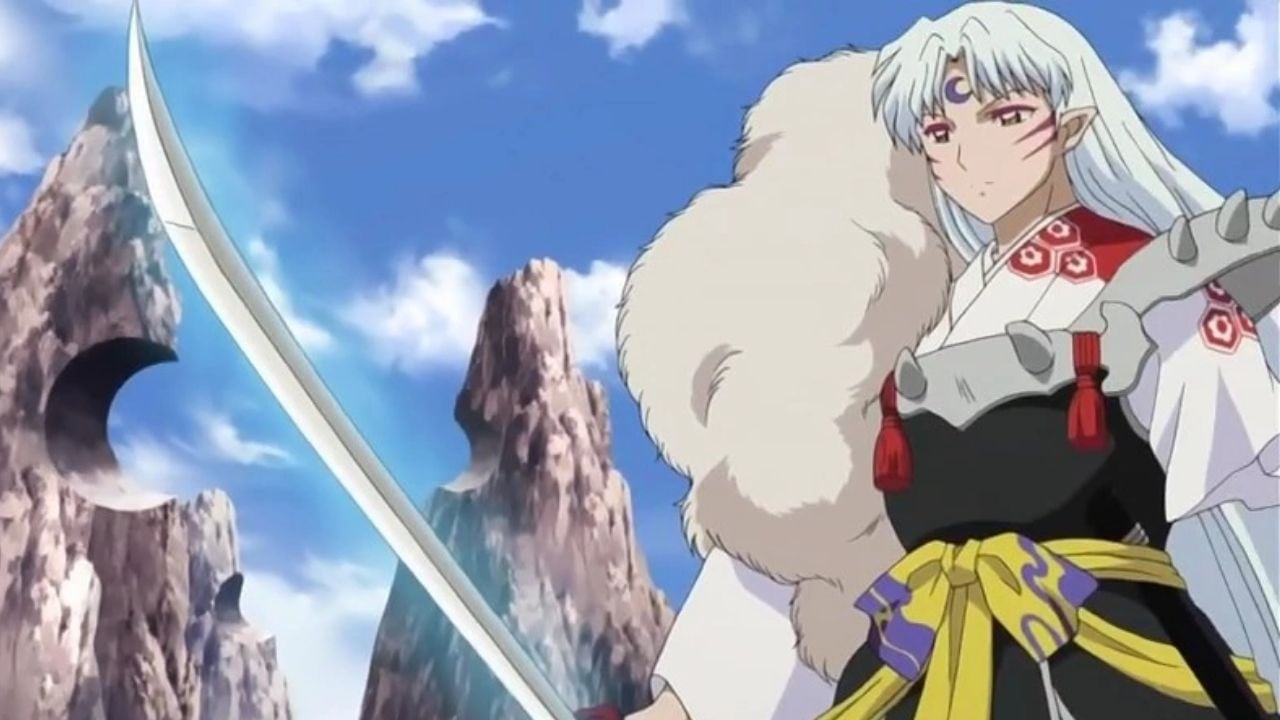
- In Sesshōmaru’s case, he kills because he wants to destroy humans and demons’ “Circle of Life”. But other than the Lion King reference, life comes in a perfect and complete circle, which means it comes and goes.
Humans and demons alike die in the Sengoku Jidai. So, even if Sesshōmaru’s name doesn’t literally contain “circle”, “round”, “perfect”, or “complete” in it, he’s still responsible for halting or ending the continuity of living beings’ lives. - Characters from #2 to 5 have “perfection” or “perfect” in their names; so, we’ll skip explaining theirs. As for Goryōmaru, he shoots “Spirit Circles”, which could also be his name’s meaning.
- In the meantime, Takemaru of Setsuna is the samurai lord who envied the love affair of Izayoi with Tōga (Izayoi is InuYasha’s mom; Tōga is InuYasha and Sesshōmaru’s father). Their emblazing but forbidden love brought about Takemaru’s death in the collapsed mansion, but not before his jealous rage burned in the heat of the moment.
In InuYasha Movie 3: Swords of an Honourable Ruler, he was resurrected (which implies the “-maru” suffix because being resurrected means his life went in a “circle”.) But InuYasha killed the samurai lord who became a specter after resurrection. - The rock formations of agate minerals consist of a cycle (another “circle”). As long as volcanoes spout out lava, gemstones will continue to form, and with perfect beauty, no less!
This Great Moth Demon debuted in InuYasha Movie 1: Affections Touching Across Time; he is the main antagonist in this movie.
8. Names of Moroha’s Friends
Take note also that the names of Moroha’s friends are based on time:
- “Towa”, the older twin, means “Eternity”;
- “Setsuna”, the younger twin, means “Moment”
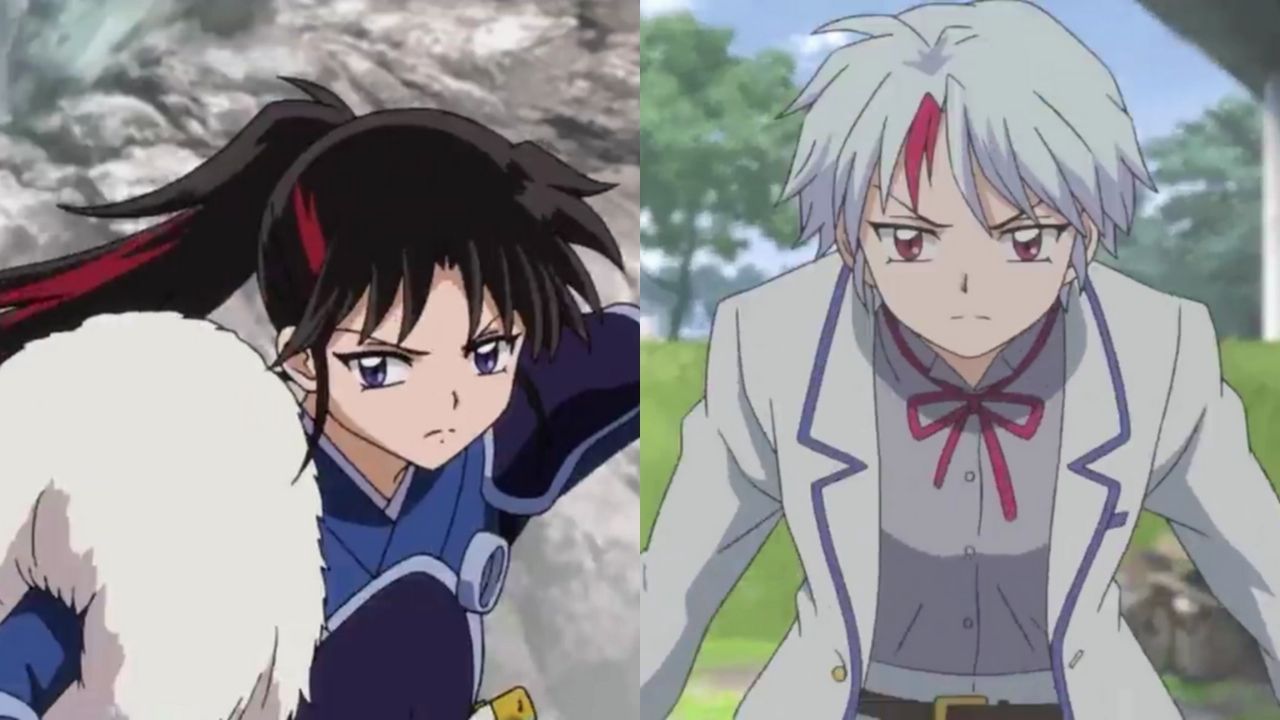
Many fans don’t consider the InuYasha movies as cannon. Why would the twins’ parents (Sesshōmaru and possibly, Rin) even give their younger daughter a name that is based on a jealous samurai lord who is after InuYasha’s mother?
Sesshōmaru despises InuYasha. Even if InuYasha: The Final Act anime shows that the half-brothers are less hateful towards one another, Sesshōmaru wouldn’t even imagine using Takemaru of Setsuna’s name on his child!
9. The Vajra Sword
The Hindu myths of India consider the “Kurika” sword to be a vajra one. They stories tell that it is the universe’s most formidable weapon.
Not only because it’s believed to be made from the bones of a Hindu religious figure, Maharshi Dadhichi; rather, it’s because of its two unique compositions:
- Diamonds – Diamonds are the hardest minerals on earth. Its Greek origin word (“adamas”) means “indestructible” and “unconquerable”.
Since fans were introduced to the Rainbow Pearls in Episode 2, we might as well theorize that Moroha’s sword could be strengthened with natural minerals.
Just imagine Moroha’s Kurikaramaru sword increases its spiritual power tenfold because she embeds it with a Red Rainbow Pearl, a natural mineral.
Why do I think that the Rainbow Pearls are natural minerals capable of strengthening weapons in the series? Well, it’s because the closest natural mineral I can think of in the series is the Shiko no Tama (or the “Sacred Jewel”).
Even if it’s confirmed in the manga that the jewel is made up of Priestess Midoriko’s soul waging an eternal war with thousands of demons of the Sengoku Jidai, the jewel still shoots out from the priestess’ stalagmite corpse!
After all, stalagmites are formed from precipitating water dripping into cavern floors for several years. So, we can validate that the Shiko no Tama shoots out from Priestess Midoriko’s hardened corpse, which is made up of mounds of mineral deposits.
Even if the Kurikaramaru blade doesn’t seem to possess diamond minerals nor diamond-like powers in it, we must remember that Moroha’s father uses a sword technique called the “Kongōsōha”!
Whenever InuYasha wants to wield this attack, he only needs to shout “Kongōsōha” (or “Adamant Barrage” in the English translation of the series). It’s also known as “Diamond Spear Blast” because diamonds emerge from his Tessaiga sword.
Kongōsōha (金剛槍破, こんごうそうは) is a powerful sword attack that InuYasha inherited from a jewel maker named Hōsenki the First (Hōsenki I).
The attack was bequeathed to him because he passed the jewel maker’s trial when he visited his father’s graveyard for the second time (Season 6, episode 157).
So, if InuYasha can augment the Tessaiga’s spiritual powers with the Shiko no Tama, why can’t his daughter do the same thing?
All Moroha needs to do is apply a Red Rainbow Pearl in her Kurikaramaru, and bam! We have a spectacular sword fit for a bounty hunter princess!
- Thunderbolts – Upon realizing that vajra is connected to thunderbolt, I immediately remembered the ‘Thunder Brothers’.
The Thunder Brothers are minor antagonists during the first season of the series. But it helps fans to connect how a thunder’s irresistible force is alike to the vajra’s power.
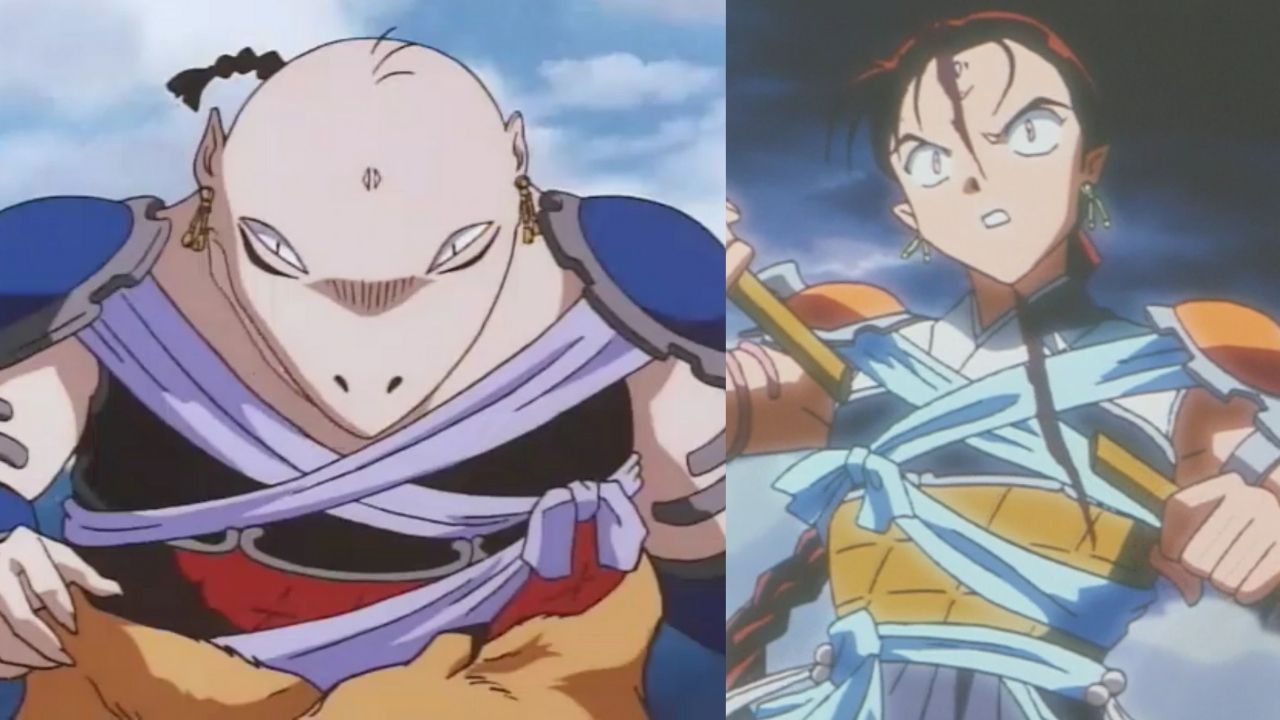
When you combine diamonds and thunders together in a weapon, Moroha gets the indestructible and unconquerable Kurikaramaru sword!
(If this were Attack on Titan Survey Corps Legions, they would have fought their enemies with a Thunder Spear if you add diamond and thunder together!) 🤣
In any case, the vajra sword in Hinduism is also made up of “diamond” and “thunder” in the Sanskrit language. That’s why it is an emblem that should not be taken lightly even if ‘Etsy sellers customize vajra swords as amulets to sell’.
After all, vajra is an important item in the Hindu religion because it’s a valuable tool when performing rituals in India and other Asian nations.
10. The Quarter-Demon Moroha
Asmanyfans already know, ‘Moroha’ () is a tritagonist or tertiary ‘quarter-demon’ in Yashahime.
[“Hanyou no Yashahime” Bean Talk # 4]
Today’s “Hanyou no Yashahime” bean talk is
We will deliver the post of “# 4 Quarter Youkai”!“Hanyou no Yashahime” is
Yomiuri TV / NTV
Broadcast starts from 5:30 pm on Saturday, October 3!
(* Excluding some areas)
Official site ↓
http://hanyo-yashahime.comYashahime: Princess Half-Young
Quaternary Youkai
English Translation, Twitter Translate
In Episode 2, she introduced herself as “Beniyasha” (Crimson Demon) and Destroyer of Lands.
Had her battle with Setsuna continued, she would have applied her rouge lipstick on her lips and wielded her unique attack called the “Bloodthirsty Dawn” (which reminds me of Sailor Moon since the casts in that anime applies make-up or lipstick to use their powers!).
In any case, Morohas’s name means “Double-Edged”. And I believe this “Double-Edged” is a fitting meaning for her name because it parallels the connotations of Kurikaramaru (which is already nicknamed by fans as the “Baka-guroshi no Moroha”).
I’m not sure what that means, but perhaps it’s due to her silly and clumsy personality, plus the fact that she’s a Higurashi. So, it might be a new word formed from “baka” (silly or clumsy) + Higurashi (her surname); but with an “o” instead of a letter “a”.
In any case, Moroha is the perfect copy + paste version of her father and mother! Just look at her when she lets her black hair down (screencap from Preview of Episode 3):
She’s 50/50 InuYasha and Kagome. But with her black hair down, she’s a mini female version of InuYasha in human form! What a darling and a feisty princess Rumiko Takahashi made! She’s wonderful as InuYasha and Kagome’s daughter!
11. Moroha’s Flaming Dragon Sword
Going back to the mythology of the Kurikara-ken (倶利伽羅剣), it is a double-edged vajra sword which belonged to Fudō Myō-ō’, the Japanese Buddhist God of Fire.
This only leads to one thing: Moroha can shoot out dragon blazes from her Kurikaramaru sword!
Therefore, we can confidently say that Kurikaramaru is also “Double-Edged” because:
- the Hindu myth stories describes an emblazoned red Kurika sword whenever its warriors wield it in battle;
- the legends also told how a fire dragon god emerges from the Kurika sword;
If you rewatch Episode 2 of Yashahime, she shouted “Crimson Dragon Wave” to help Setsuna attack Mistress Three-Eyes (Mistress Centipede’s granddaughter, the enemy from the first episode of the original series).
Moroha’s Kurikaramaru sword is totally based on the mythical Kurikara sword, and so is her name! What a nice touch to the Kurikara-ken myth!
12. Moroha’s Attacks
In Episode 2, fans were introduced to two of Moroha’s special attacks:
- the ‘Heavenly Arrow Barrage or Tenkū no Yafusuma’ – she inherited the spiritual bow and arrow powers from her mom (Kagome), and the barrage attack from her dad (InuYasha’s “Adamant Barrage” sword attack);
- the Crimson Dragon Wave or Kōryū (紅龍 or 紅竜) – this is likely a combination from her dad’s Dragon-Scaled Tessaiga form, and Sesshōmaru’s Sōryūha (also known as “Dragon Strike” or “Blue Dragon Blast”)
Rumiko Takahashi briefly drew a Flaming Tessaiga when InuYasha absorbed Kinka, a twin of conjoined demons Kinka and Ginka.
The Flaming Tessaiga never got the chance to shine in the manga nor in the anime. But with Moroha’s power skill sets, Rumiko Takahashi finally got the opportunity to do so!
Moroha is “fire” to a tea! Everything about her from her red haori to her techniques speak fire!
She wears a stitched “Robe of the Fire Rat”, a cloak she likely inherited from her dad. And her Kurikaramaru is a flame-based sword with an engraved dragon in it!
13. Kōryūha (破) vs. Sōryūha (蒼竜破)
Here are the differences between Moroha’s crimson dragon and Sesshōmaru’s azure dragon:
- Kōryūha – the name of the attack is Kōryūha but Moroha shouts “Kōryūh” so the red dragon emits from her Kurikaramaru sword.
The crimson dragon is also referred to as Sekiryuu (赤竜 or Chaos Dragon) in Japanese mythology, or the Chilong in Chinese myths. Legend has it that these dragons were born from the sun or the volcano, which is why they can breathe fire.
If you compare the mythical Hindu vajra sword and Moroha’s Kurikaramaru sword, you’ll notice their similarities.
The flame-wreath dragon is one-horned and is coiling around the vajra sword ready to swallow its pointy tip (which is why her Kōryūha attack functions in the same way the mythical Hindu sword works.)
The engraved dragon on Kurikaramaru’s silver metal even glows a touch shade of golden light to warn opponents of its flaming power.
Once Moroha shouts “Kōryūh”, a vermillion dragon emerges from the flame-transformed blade so she can strike her enemies.
Kōryūha (破) also uses the kanji for crush in the same way that Tessaiga attacks. What an awesome father and daughter dynamic from the creators!
Not only did they parallel Kurikaramaru’s blade design and name to the Hindu myth; they also strongly linked InuYasha’s Tessaiga attacks to Moroha’s Kōryūha sword technique! It’s a fantastic way to connect old generation viewers to the new ones!
- Sōryūha – As I said before, Sōryūha comes from Sesshōmaru’s attack (seen in InuYasha Movie 4: Fire on the Mystic Island, another fire reference!). But his Dragon Strike or Dragon Blast is of a different colour from Moroha’s.
Sōryūha is the first form of attack that his Tōkijin sword uses; moreover, it’s also his most powerful technique. Streams of lighting emerge from Sesshōmaru’s Tōkijin sword so a blue dragon can emerge.
Using his defensive skills, he can also channel the azure energy on the earth so that the lightning electrocutes his opponents in a roundabout way.
Sesshōmaru wielded a sword in the anime where a crimson spiritual dragon erupted from it. I’m not sure which episode of the anime this is from, but it’s clearly a reference to Moroha’s mystical vermillion dragon erupting from her Kurikaramaru.
14. The Queen of Manga’s 63rd birthday
Born on October 10, 1957, Rumiko Takahashi (also dubbed as the Queen of Manga), celebrated her 63rd birthday recently, we might as well add information on this blog about her supervision on Yashahime.
Not only did she provide the character designs for Towa, Setsuna, and Moroha; she also provided the storyline to Yashahime!
Think of it this way: Yashahime anime wouldn’t even exist if she didn’t give her green light on it. On the other side of the coin, it’s also like a gift that the Sunrise staff presented to her.
After all, the animation staff have been talking about a sequel in the works anyway since InuYasha: The Final Act anime series concluded in 2010, but it didn’t materialize until a decade later.
During the production, the animation staff of Sunrise go to Takahashi-sensei for script review and approval.
She even mentioned in an ‘Animage interview’ that she redrew the twins several times before getting their character design sketches right!
Moroha is special though. She drew InuYasha’s daughter in one go, emphasizing to the Sunrise animation team, “This is Moroha.”
Yashahime may only be a spin-off, but it’s the closest spin-off that the original mangaka closely supervises. What a supervisor!
15. Hanyô no Yashahime: Sengoku Otogizoushi
As a bonus, here’s more info on Yashahime’s official title. So, we know that Sengoku (戦国) means “Warring States”, and that it’s the abbreviation for Sengoku Jidai (戦国時代), the Warring States Period.
Many fans know that the Warring States Period is InuYasha and Yashahime’s timeline for the casts’ medieval adventures.
But not many fans know that this occurred between the 15th – 16th century. It is a historic Japanese bloodbath battle era from 1467-1568 C.E.
Moreover, the sceneries in real life are gorier and more horrific than what the InuYasha anime portrays in either the manga, the anime, movies, or games.
Whereas the original anime and the sequel make it sound fun and cute to travel there (Kagome survived the battles there for more than a year after because she has InuYasha saving her several times), war veterans were traumatized and became terrified of bombs, guns, and attacks.
They’ve had enough share of violent experiences during the warfare; therefore, battles during Japan’s ancient era on anime format might not appeal to them.
After all, Otogizōshi (御伽草子) means “fairy tale book” (the same title that medieval literary genre short story collections are named after).
If you were introduced to InuYasha: A Feudal Fairy Tale, well, think again. That’s only a loose translation. An accurate translation would be “A Warring States Book of Fairy Tales“.
It’s longer, but an appropriate subtitle to the sequel is Princess Half-Demon: A Warring States Book of Fairy Tales.
16. About InuYasha
InuYasha, also known as InuYasha: A Feudal Fairy Tale, is a Japanese manga series written and illustrated by Rumiko Takahashi.
InuYasha premiered in Weekly Shōnen Sunday on November 13, 1996, and concluded on June 18, 2008, with its 558 chapters collected into 56 tankōbon volumes by Shogakukan.
Kagome Higurashi, a 15-year-old schoolgirl, gets transported to the Sengoku Jidai period of Japan after falling into a well in her family shrine. There she meets the half dog-demon, InuYasha.
Kagome possesses a powerful magical Shikon Jewel. When a monster from that era tries to take the jewel, Kagome shatters the jewel into many pieces.
Now, Kagome and InuYasha must retrieve the shards before the evil half spider-demon Naraku finds them!
17. About Hanyô no Yashahime
Hanyô no Yashahime follows the adventures of Sesshomaru’s half-demon twin daughters, Towa and Setsuna. When they were young, the half-demon twins were separated from each other during a forest fire.
While desperately searching for her younger sister, Towa wandered into a mysterious tunnel that sends her into present-day Japan.
She is found and raised by Kagome Higurashi’s brother, Sôta, and his family. Ten years later, the tunnel that connects the two eras has reopened!
This allowed Towa to be reunited with Setsuna, who is now a Demon Slayer working for Kohaku. But to Towa’s shock, Setsuna appears to have lost all memories of her older sister!
Joined by Moroha, the daughter of InuYasha and Kagome, the three young girls travel between the two eras on an adventure to regain their missing past.
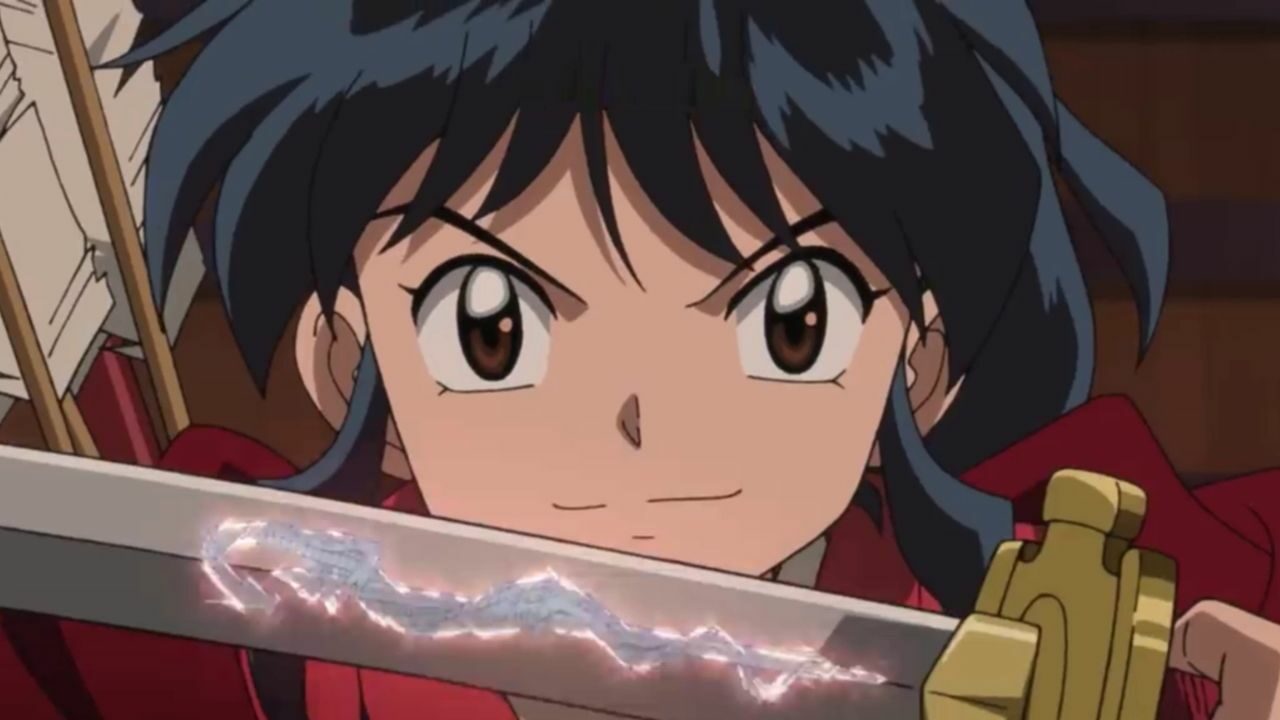
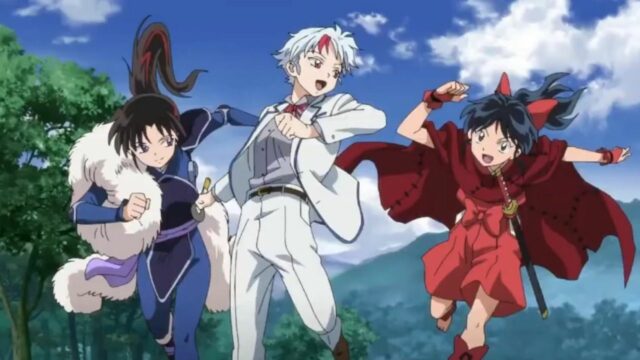
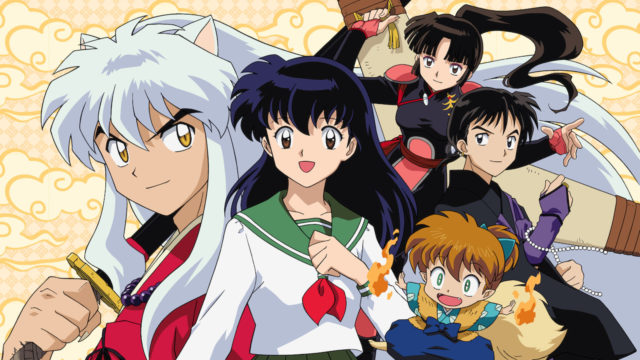
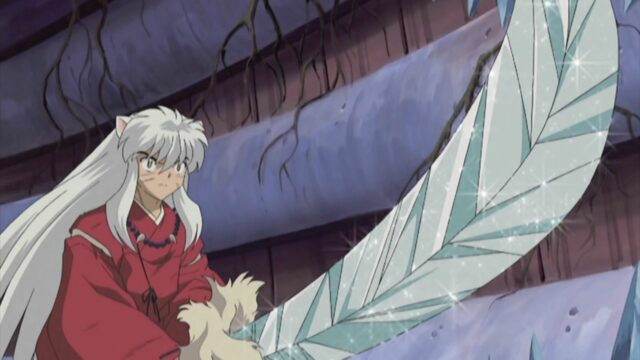
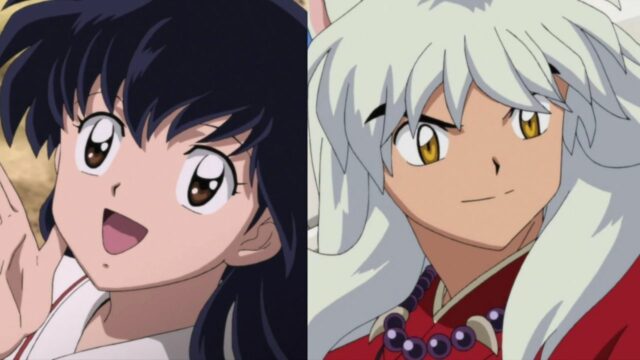
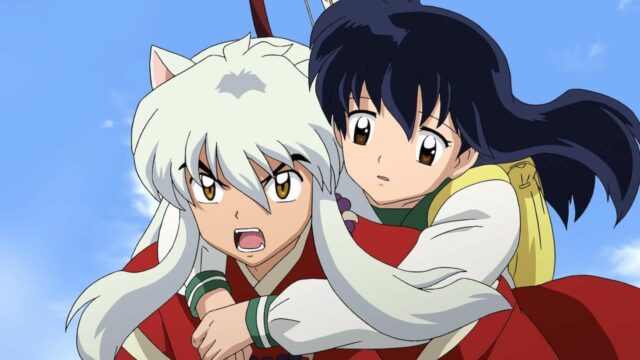
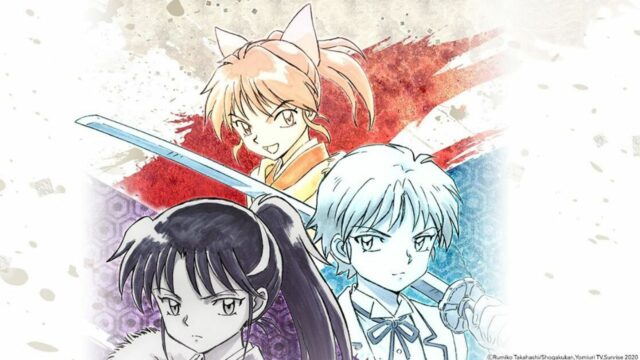
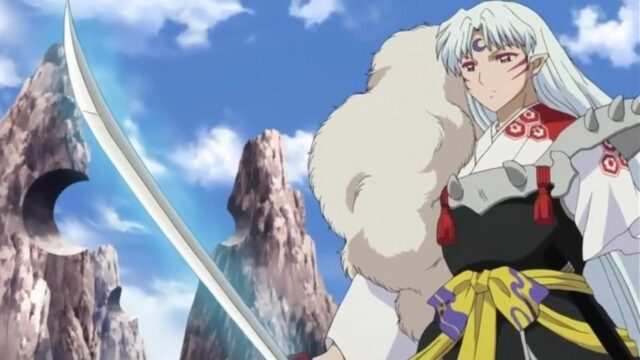
No Comments on What is Moroha’s Sword: “Kurikaramaru”?